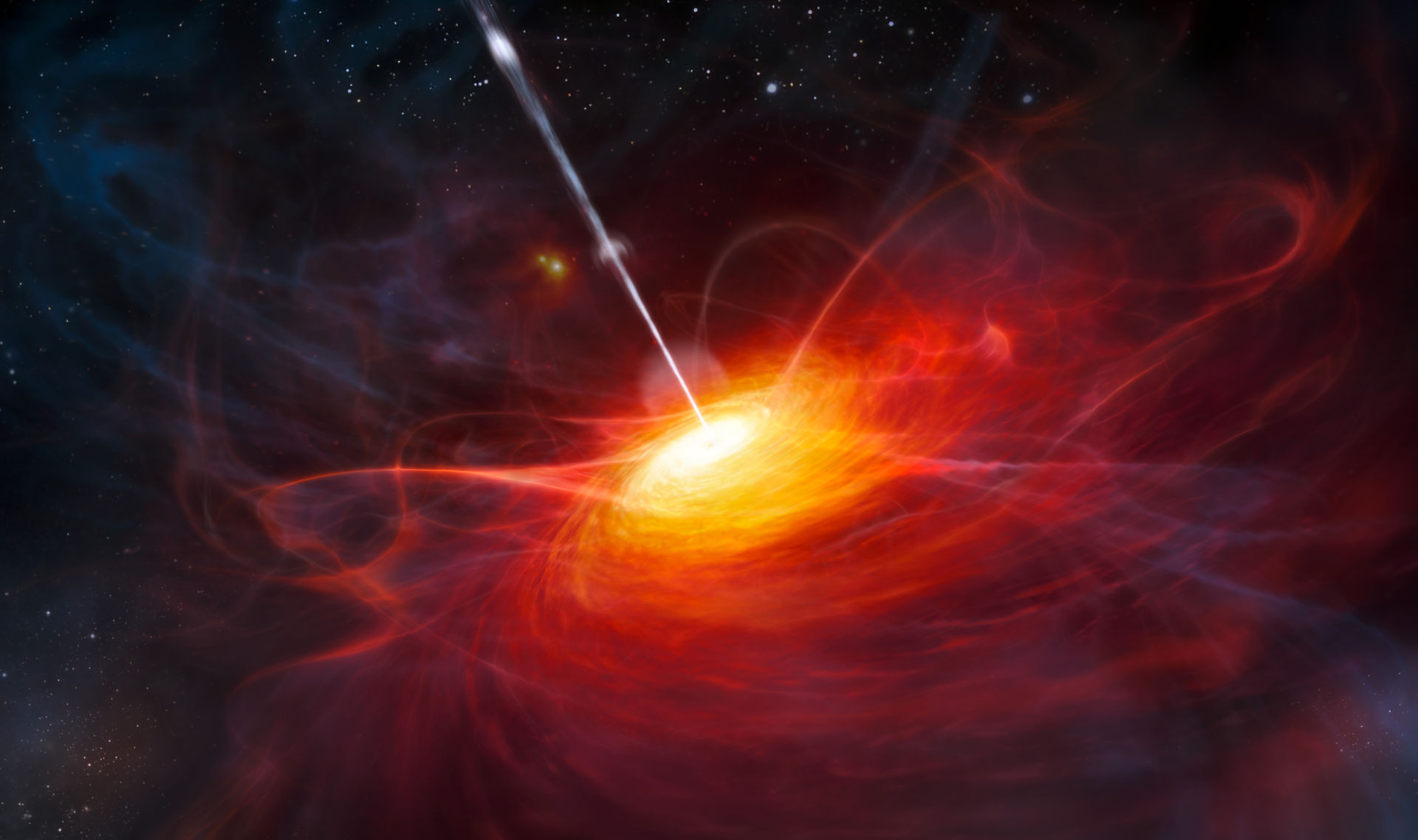
Finding Quasars
Finding quasars suitable for measuring in the near ultraviolet proves difficult from the start. One can start looking and searching for papers that measured quasars fitting the requirements, but this becomes exhausting quickly.
The Right Source
The Right Parameters
When one looks at the interface on the aforementioned website, one can see in the top left corner the parameters button (three horizontal bars). The parameters that were chosen are: Spectral Range, Signal-to-Noise Ratio (SNR), Data Collection and Instrument. After selecting these, the first parameter that needs to be set is the data collection. This is due to the use of a special data collection in this project. The UVES SQUAD or UVES Spectral Quasar Absorption Database is a data base solely consisting of quasar observations with the UVES (Ultraviolet and Visual Echelle Spectrograph). Now after this, the spectral range can be set to UV, the instrument can be set to UVES and the signal-to-noise ratio can be set to the highest level and later to lower levels.[2]
The UVES instrument has a covered wavelength of about 300 – 500 nm.[1] The data base covers quasars that have a red-shift of z = 0 up to z = 5.[3]
Some Available Data Sets
The data base only has four quasar data sets available with the SNR at its highest level of over 100. When choosing a SNR of over 30, there are 84 sets available. [2] The number of data sets should now be enough for this project.
Quasar Data Sets
The Quasar data sets below are presented in the following way: Quasar Location || Signal-to-Noise Ratio || Spectral Range (nm) || Link. These are only some of the available data sets, more can be found in the ESO Science Portal.
J051707-441055 || 155.4 || 304.4 – 1043 || Link
J081331+254503 || 109.1 || 304.5 – 665.7 || Link
J024008-230915 || 104.4 || 304.4 – 1043 || Link
J094253-110426 || 113.4 || 304.4 – 1043 || Link
J110325-264515 || 97.0 || 304.5 – 665.7 || Link
J112442-170517 || 94.3 || 304.7 – 1043 || Link
J222006-280323 || 88.4 || 304.6 – 1043 || Link
J014333-391700 || 84.3 || 304.7 – 1043 || Link
J000448-415728 || 84.2 || 304.6 – 1043 || Link
J135038-251216 || 81.0 || 304.3 – 1043 || Link
J133335+164903 || 80.8 || 304.5 – 1043 || Link
J015327-431137 || 79.4 || 304.2 – 1043 || Link
J212912-153841 || 78.8 || 323.4 – 1043 || Link
J042214-384452 || 74.0 || 323.3 – 1043 || Link
J000344-232355 || 72.2 || 304.7 – 1043 || Link
J011143-350300 || 71.5 || 304.6 – 1043 || Link
Sources
-
UVES Instrument Description: https://www.eso.org/sci/facilities/paranal/instruments/uves/inst.html#:~:text=UVES%20is%20a%20two%2Darm,to%20use%20dichroic%20beam%20splitters. (01.10.22, 12:22)
-
ESO Science Portal with Settings: https://archive.eso.org/scienceportal/home?data_release_date=*:2019-03-21&data_collection=UVES_SQUAD&sort=-pi.keyword,-obs_date&s=P%2FDSS2%2Fcolor&f=180&fc=-1,-1&cs=J2000&av=true&ac=false&c=8,9,10,12,13,14,15,16,17,18&mt=true&dts=true&at=150.025582453,-34.32782535 (01.10.22, 12:22)
-
UVES SQUAD Info: https://archive.eso.org/cms/eso-archive-news/the-uves-spectral-quasar-absorption-database--squad--data-releas.html (01.10.22, 12:22)
The right source needed to find a larger number of quasar data sets proved to be:
https://archive.eso.org/scienceportal/home
This archive consists of processed telescope data from the ESO observatory at La Silla Paranal Observatory.[2]
